Holocaust Memorial Day: Concentration camp survivors walk back into Auschwitz
About 100 survivors attended commemorations with world leaders in Poland
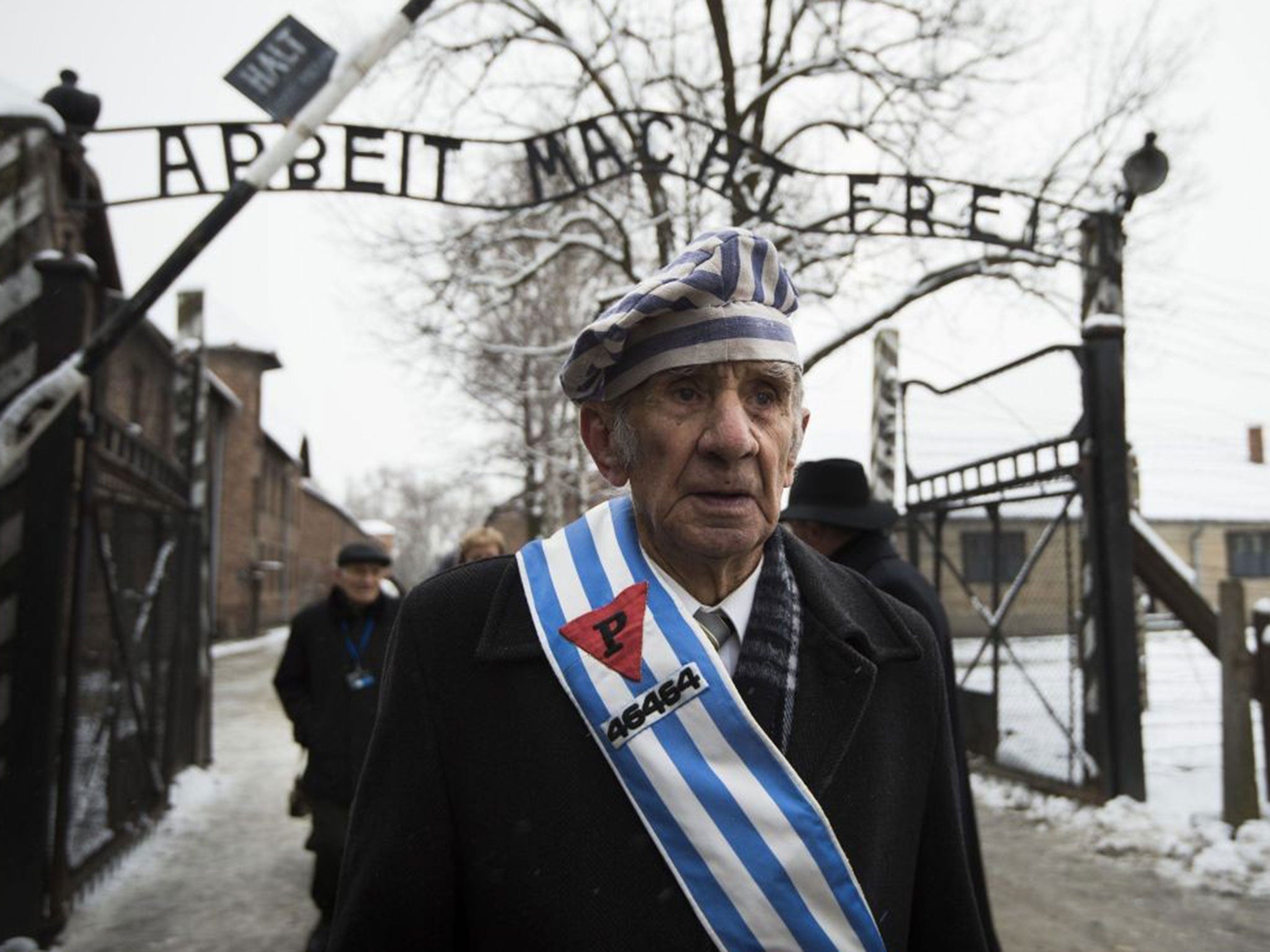
Your support helps us to tell the story
From reproductive rights to climate change to Big Tech, The Independent is on the ground when the story is developing. Whether it's investigating the financials of Elon Musk's pro-Trump PAC or producing our latest documentary, 'The A Word', which shines a light on the American women fighting for reproductive rights, we know how important it is to parse out the facts from the messaging.
At such a critical moment in US history, we need reporters on the ground. Your donation allows us to keep sending journalists to speak to both sides of the story.
The Independent is trusted by Americans across the entire political spectrum. And unlike many other quality news outlets, we choose not to lock Americans out of our reporting and analysis with paywalls. We believe quality journalism should be available to everyone, paid for by those who can afford it.
Your support makes all the difference.Holocaust survivors walked back into the death camp they escaped as children today to mark 70 years since the liberation of Auschwitz.
Around 100 returned on Holocaust Memorial Day, joining world leaders to remember the systematic murder of millions of Jews, homosexuals, gypsies, disabled people and political prisoners.
They made an emotional visit to the “death wall”, which was the site of thousands of executions before the construction of gas chambers.
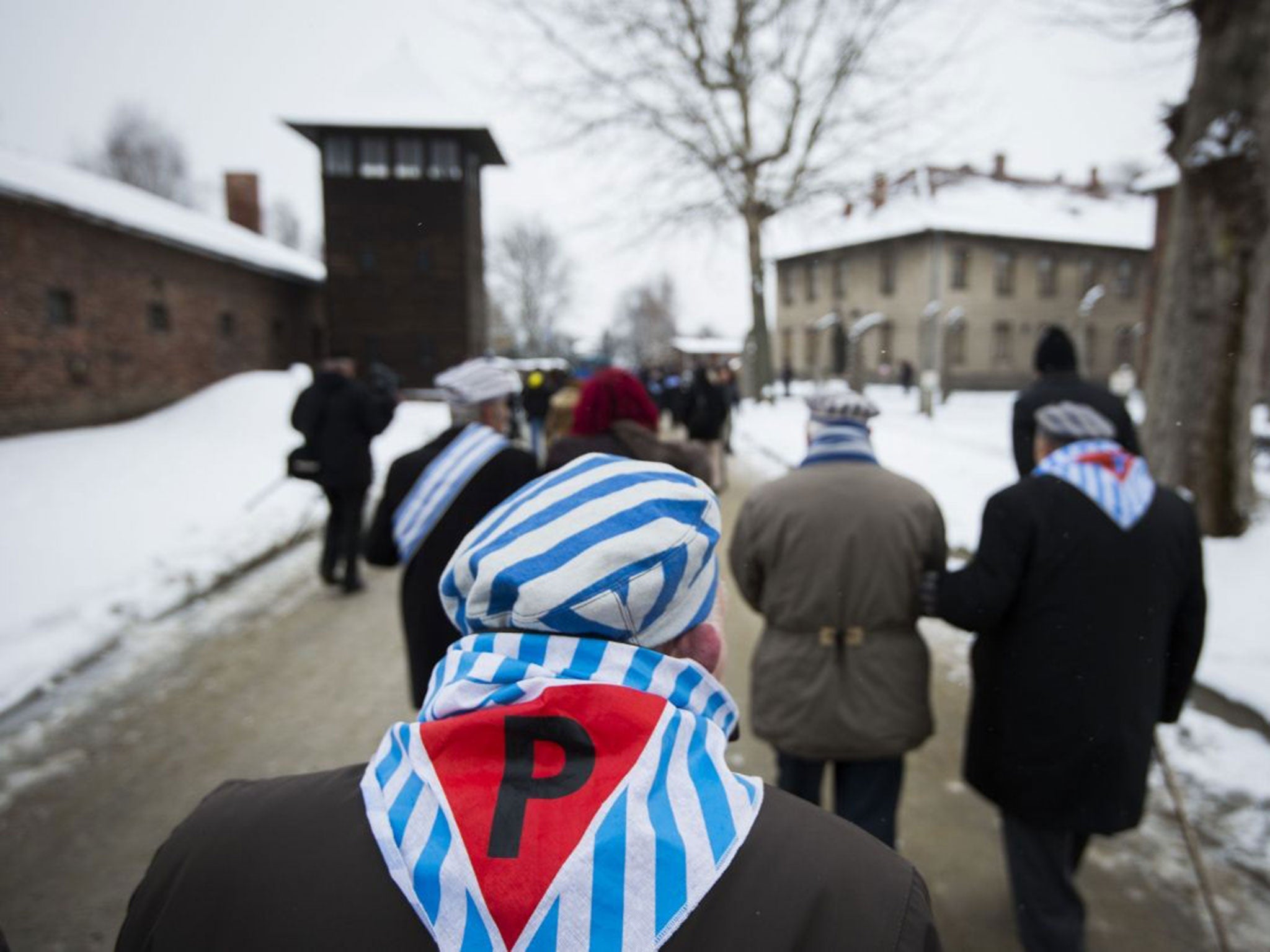
Condemned prisoners were separated into groups of men and women, made to strip, lined up along the wall in pairs and shot in the back of the head. Other death camp inmates were then forced drag their bodies and into lorries to be cremated.
Survivors left wreaths at the wall and paused to reflect the millions murdered, among them family and friends.
Some wore sashes displaying the numbers assigned to them at death camps and symbols telling why they were taken by the Nazis – an inverted red triangle for a political prisoner on striped blue and white fabric evoking the striped uniforms they were made to wear.
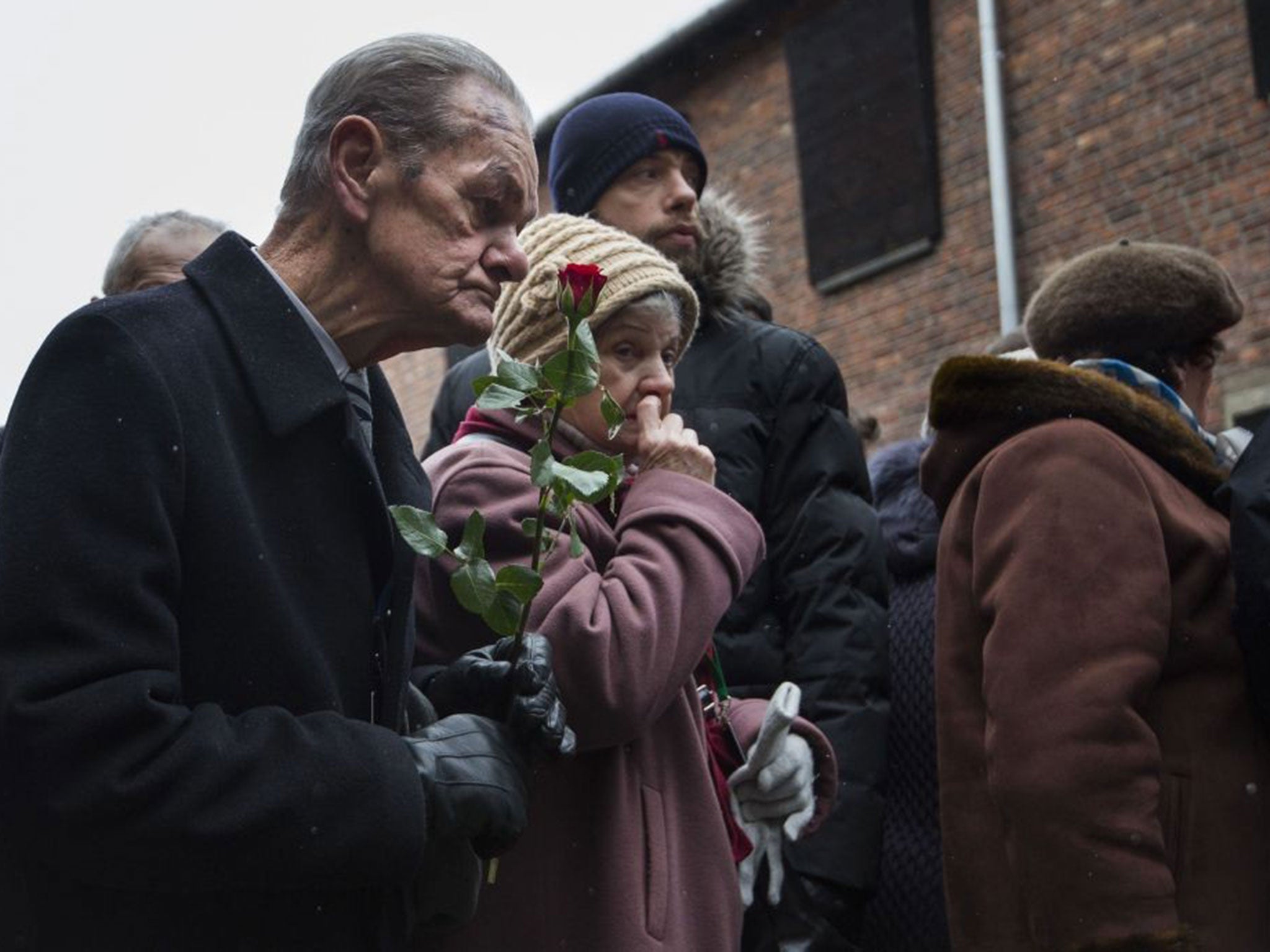
Susan Pollack arrived in Auschwitz with her older brother and mother in May 1944. She was 14.
“Suddenly we were woken and the shouting started,” she said. “It was night, the light beaming down on us and the orders, ‘move here’, ‘move there’: it was just terror.”
A Hungarian Jew, she spent the next seven weeks in the camp before being marched to Bergen-Belsen and eventually liberated by the arrival of British troops in April 1945.
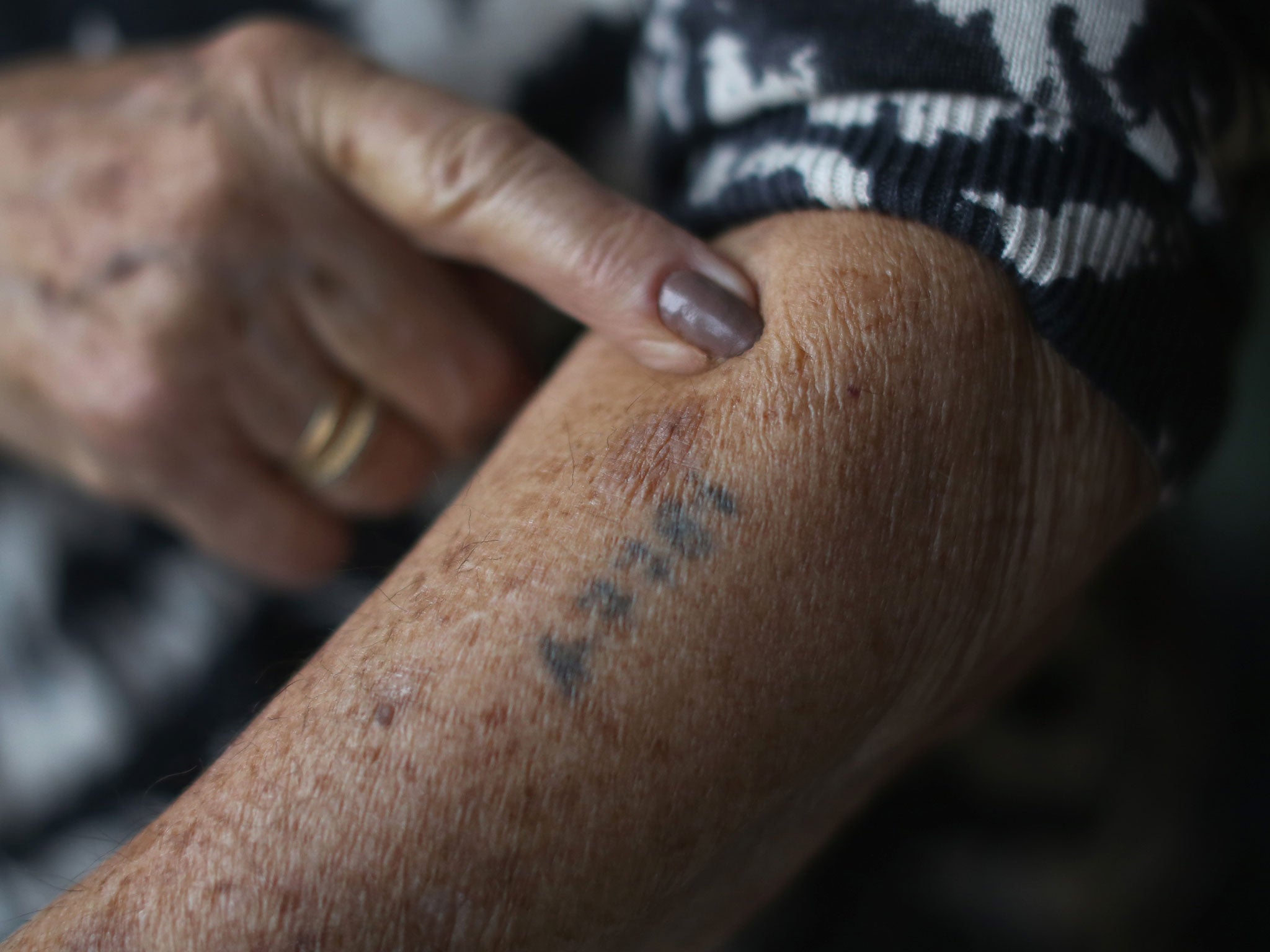
Mrs Pollack, who married a fellow survivor and settled in London, remembers living in crippling fear that “deprived anyone’s mind of any thoughts”.
“It was like being placed in some freezing water when you can’t move and you can’t do anything because you must not speak, you must not act, you must not respond. We were just dazed. That’s what they had done to us,” she added.
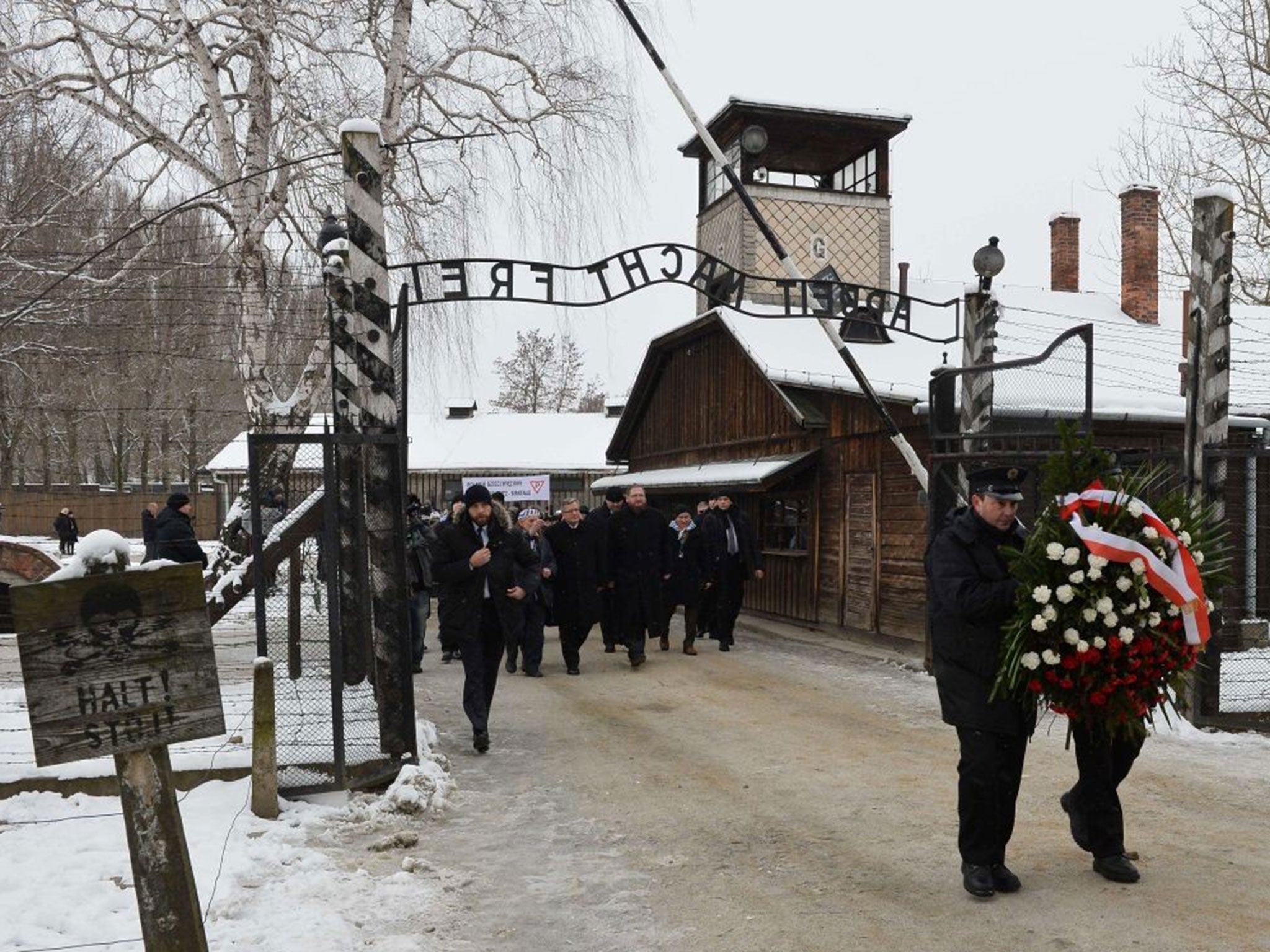
Months later, as the end of the war approached and the Nazis sensed defeat, Himmler ordered gassing to stop and Auschwitz’s chambers were dismantled as officers scrambled to destroy evidence of the holocaust.
When the camps were evacuated in January 1945, an estimated 58,000 prisoners were marched out of the camp under guard on the “death march” to other concentration camps.
But when Soviet soldiers finally liberated Auschwitz on 27 January, they found 7,500 prisoners left there because they had been deemed too weak to walk, among hundreds of corpses.
Paula Lebovics, who was 11 years old at the time, remembers being picked up and rocked by a Russian soldier as he started to cry.
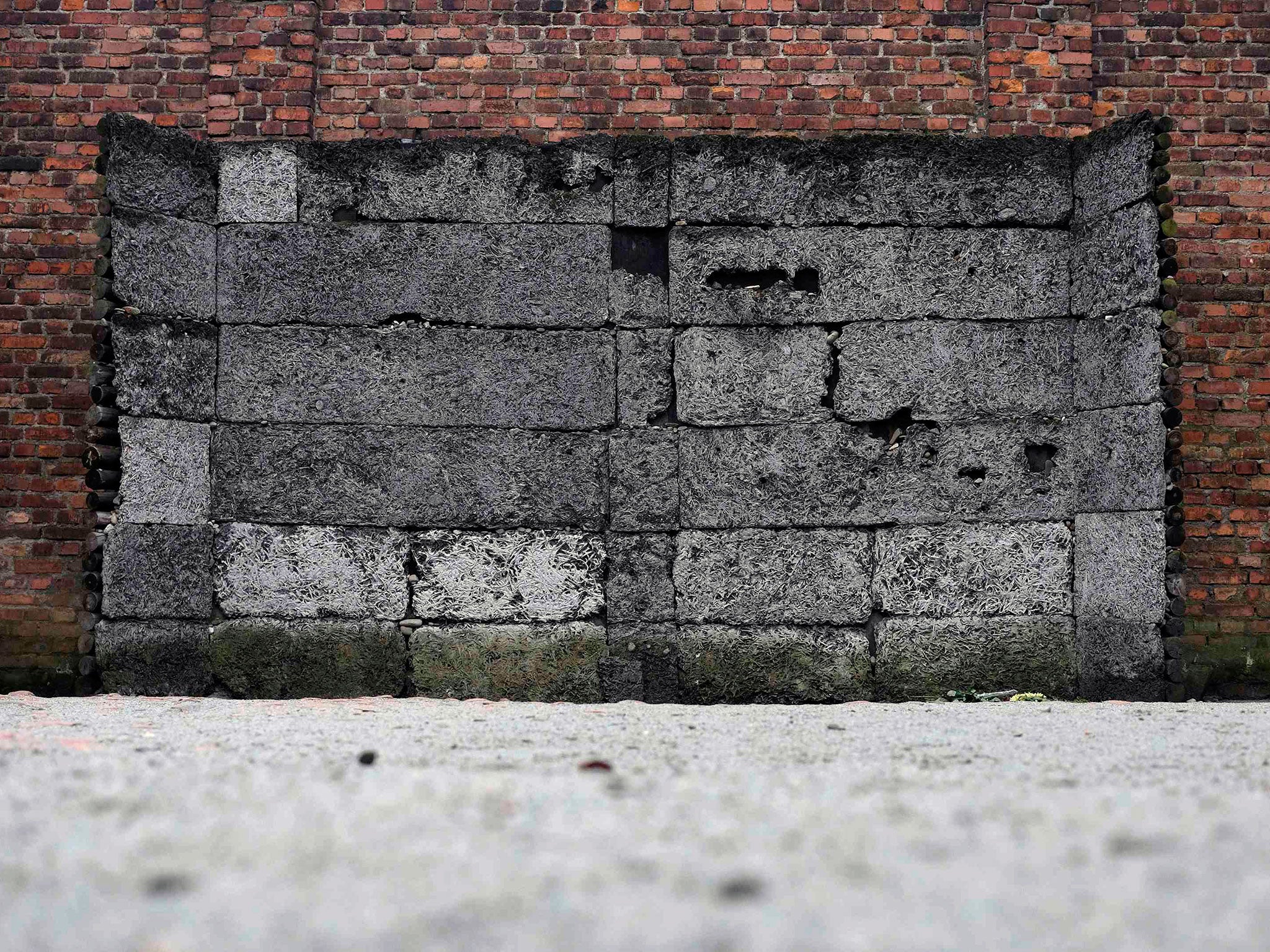
Now 81, she returned to Auschwitz today from her home in California to mark the memorial.
“A lot of people have bad memories from that (the liberation), but I have good ones. I am very grateful,” she said.
Mrs Lebovics had joined other survivors the day before to see an blown up image of them from the day the soldiers arrived.
It shows the children huddling behind barbed wire, with their threadbare striped pyjamas worn over coats and jumpers to keep out the cold.
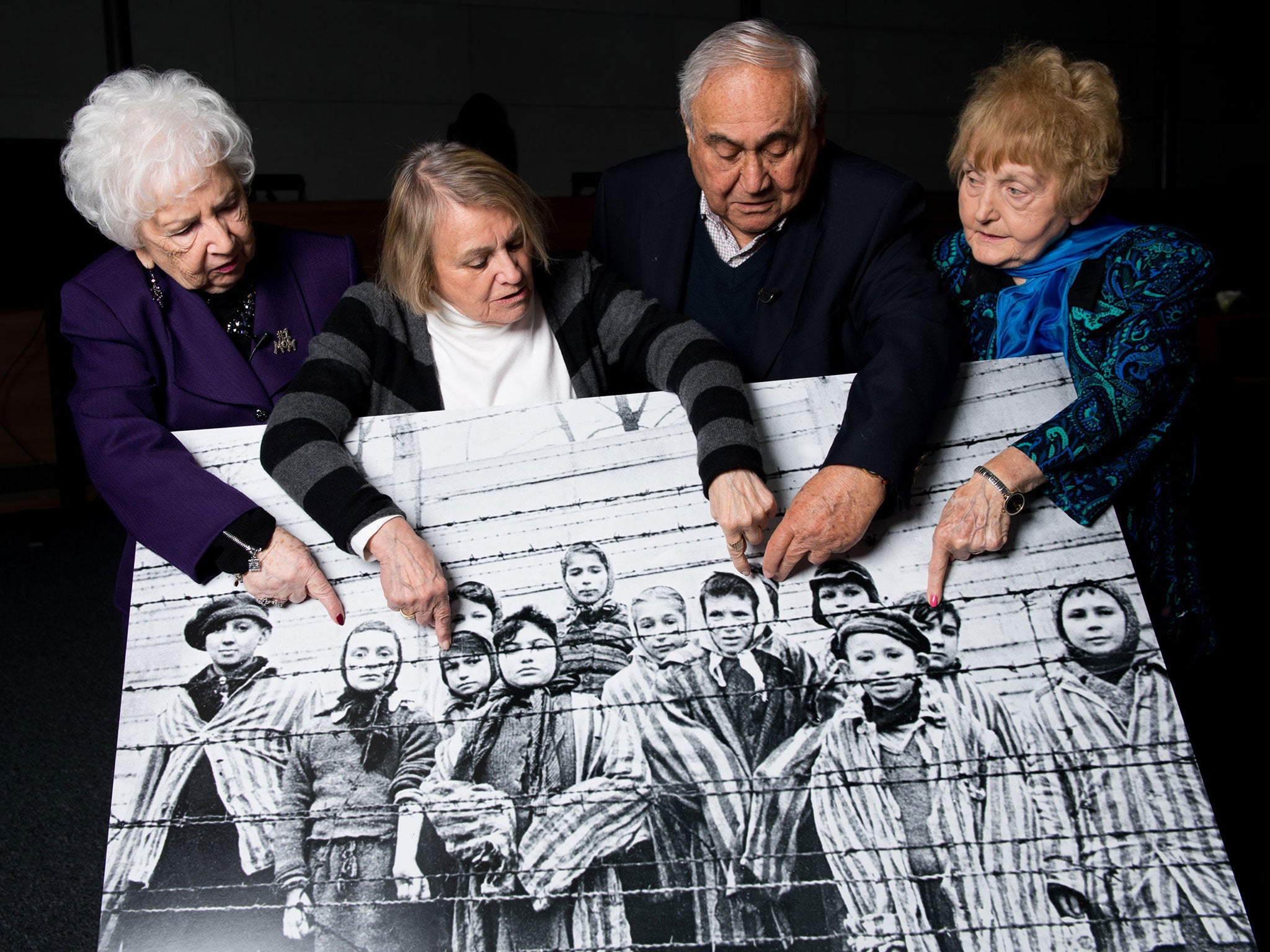
Zgymunt Shipper, 85, was taken to Auschwitz in a cattle train with his grandmother from the ghetto in Łódz, Poland.
Then aged 14, he saw the name of the camp in the slits on the side and did not know what it meant. He described the “selection”, when they had to run towards guards to be split into groups, not knowing whether he was in the one to immediately be exterminated or destined for hard labour.
“After all these years, still, I cannot understand how a human being can do that during the day and in the evening sit with his wife, and listen to music and eat his dinner. What kind of people were they?” he asks. “I’m getting older and older and I still cannot understand it."
Join our commenting forum
Join thought-provoking conversations, follow other Independent readers and see their replies
0Comments